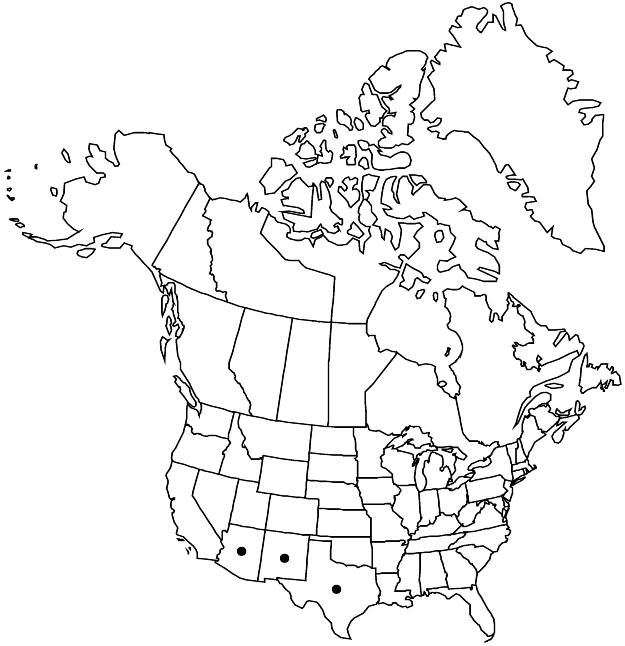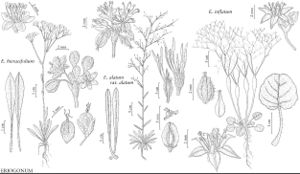Difference between revisions of "Eriogonum hieracifolium"
in A. P. de Candolle and A. L. P. P. de Candolle, Prodr. 14: 6. 1856.
FNA>Volume Importer |
imported>Volume Importer |
||
| Line 1: | Line 1: | ||
{{Treatment/ID | {{Treatment/ID | ||
|accepted_name=Eriogonum hieracifolium | |accepted_name=Eriogonum hieracifolium | ||
| − | |accepted_authority=Bentham | + | |accepted_authority=Bentham |
|publications={{Treatment/Publication | |publications={{Treatment/Publication | ||
|title=in A. P. de Candolle and A. L. P. P. de Candolle, Prodr. | |title=in A. P. de Candolle and A. L. P. P. de Candolle, Prodr. | ||
| Line 8: | Line 8: | ||
}} | }} | ||
|common_names=Hawkweed wild buckwheat | |common_names=Hawkweed wild buckwheat | ||
| + | |special_status={{Treatment/ID/Special_status | ||
| + | |code=F | ||
| + | |label=Illustrated | ||
| + | }} | ||
|basionyms= | |basionyms= | ||
|synonyms={{Treatment/ID/Synonym | |synonyms={{Treatment/ID/Synonym | ||
| Line 41: | Line 45: | ||
-->{{#Taxon: | -->{{#Taxon: | ||
name=Eriogonum hieracifolium | name=Eriogonum hieracifolium | ||
| − | |authority=Bentham | + | |authority=Bentham |
|rank=species | |rank=species | ||
|parent rank=subgenus | |parent rank=subgenus | ||
| Line 54: | Line 58: | ||
|publication title=in A. P. de Candolle and A. L. P. P. de Candolle, Prodr. | |publication title=in A. P. de Candolle and A. L. P. P. de Candolle, Prodr. | ||
|publication year=1856 | |publication year=1856 | ||
| − | |special status= | + | |special status=Illustrated |
| − | |source xml=https:// | + | |source xml=https://bitbucket.org/aafc-mbb/fna-data-curation/src/2e0870ddd59836b60bcf96646a41e87ea5a5943a/coarse_grained_fna_xml/V5/V5_784.xml |
|subfamily=Polygonaceae subfam. Eriogonoideae | |subfamily=Polygonaceae subfam. Eriogonoideae | ||
|genus=Eriogonum | |genus=Eriogonum | ||
Latest revision as of 22:13, 5 November 2020
Herbs, polycarpic, 4–7 dm, strigose; taproot not chambered. Stems: caudex compact; aerial flowering stems usually 2–5, not fistulose, 3.5–5.5 dm, strigose. Leaves basal and cauline; basal petiolate, petiole 0.5–5 cm, strigose, blade oblanceolate to spatulate, 3–15 × 0.5–2(–2.5) cm, sparsely to densely strigose on both surfaces; cauline sessile, blade oblanceolate, 0.5–5(–6) × 0.3–1 cm, similar to basal blade. Inflorescences 0.4–1.5(–1.8) dm; branches strigose; bracts scalelike, 2–8 × 1–3 mm. Peduncles erect, straight, 0.5–3(–3.5) cm, strigose. Involucres turbinate-campanulate to campanulate, 2.5–4 × 2.5–5 mm, hirsute to strigose; teeth 0.5–1.5 mm. Flowers 1.5–2.5 mm in anthesis, 3–5 mm in fruit; perianth yellow in anthesis, reddish in fruit, pilose abaxially; tepals narrowly ovate; stamens 2–3 mm; filaments pilose proximally. Achenes yellowish green to light brown, 4.5–6 mm, strigose, 3-winged along distal 1/2, nearly beakless. 2n = 40.
Phenology: Flowering Jun–Oct.
Habitat: Sandy to gravelly, often calcareous flats and slopes, grassland, saltbush, creosote bush, and mesquite communities, oak, juniper, and montane conifer woodlands
Elevation: (900-)1300-2600 m
Distribution

Ariz., N.Mex., Tex., Mexico (Chihuahua).
Discussion
Eriogonum hieracifolium is widely scattered from east-central Arizona (Apache, Gila, Graham, and Navajo counties) and adjacent west-central and southern New Mexico (Bernalillo, Catron, Dona Ana, Eddy, Grant, Lincoln, Otero, and Sierra counties) into Texas (Brewster, Culberson, Jeff Davis, Pecos, and Presidio counties). The species occurs in northeastern Chihuahua, Mexico, as well. Similar plants found near La Linda in Coahuila appear to represent a different taxon, as their vegetative structures are tomentose rather than strigose.
Selected References
None.
